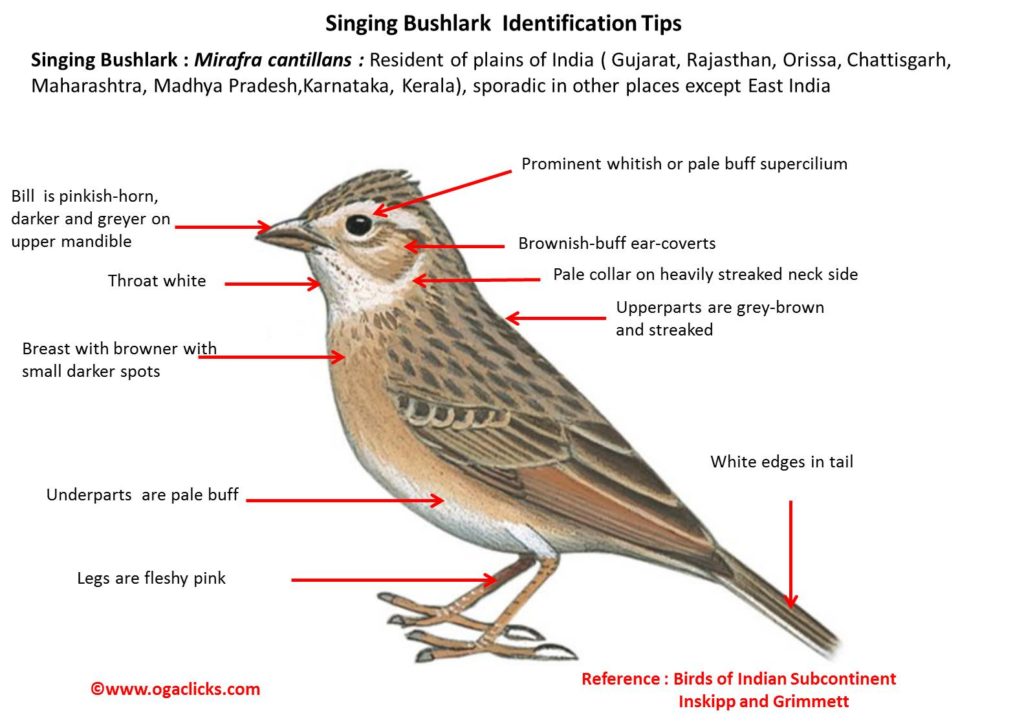
Singing Bushlark Mirafra cantillans
Etymology:
- Mirafra : Latin word mirus wonderful, and Afra from African;
- Cantillans: Latin for Warbling derived from warbling –cantio song
Vernacular Names: Hindi: Agan, Gayak Agin, Pun: Gawaiya chandol, Guj: Agan, Agan chandul, Te: Burutta pitta, Agin pitta, Mar: Gavai Chandol
Distribution in India: Resident in plains and foothill in India.
Description : Size of 12-14 cm. It is a small, compact lark with shortish, stubby bill. The nominate race has prominent whitish or pale buff supercilium contrasting with brownish-buff ear-coverts, has a pale collar separating them from dark, heavily streaked neck side. The crown and upperparts are grey-brown and streaked, mantle and back with broad pale feather edges; flight-feathers have narrow rufous or sandy-buff margins. The tail is grey-brown, white outer feathers; throat is white, rest of underparts pale buff, breast is browner with small darker spots. The eyes are dark brown; bill pinkish-horn, darker and greyer on upper mandible; legs fleshy pink. The juvenile has broad pale fringes above; more diffuse, and rounded spotting on breast.
Habitat: It is found in short grassland and open acacia Savanna; It is found in cultivated land, provided that crops are short and dense enough to provide cover.
Food Habits: It eats a mix of insects and seeds. It forages on ground, picking food from ground surface or gleaning from low vegetation; occasionally digs with bill. When flushed, frequently hovers briefly before dropping almost vertically back into grass.
Breeding Habits : They breed in May–Oct in Africa and in Aug–Sept in Indian Subcontinent. They are monogamous. The male advertises territory by aerial display. The nest is a shallow cup built of grasses, lined with fine vegetation, on ground, usually next to or under a grass tuft, usually with partial or complete dome woven into the tuft. They lay a clutch of 2–4 eggs.